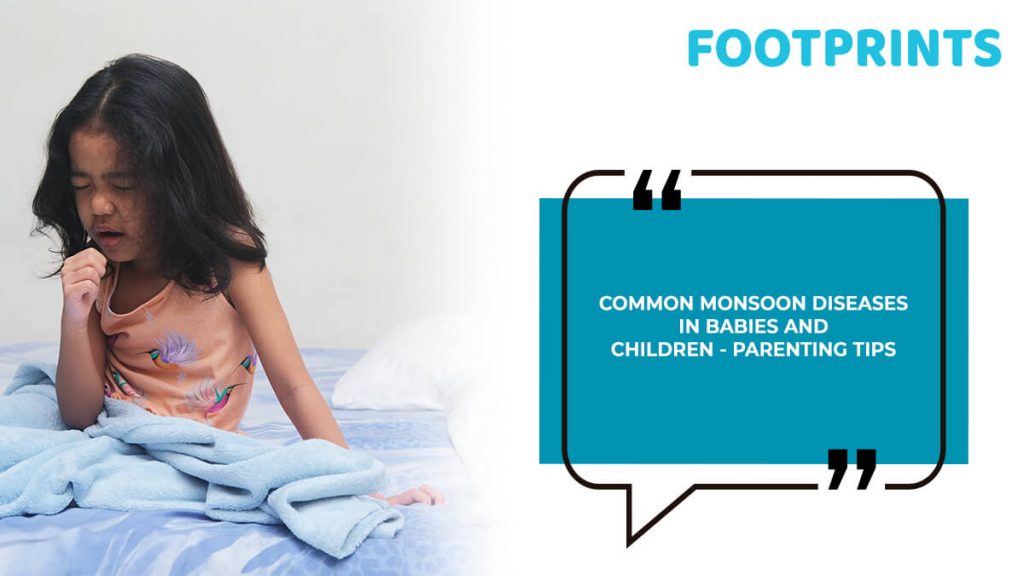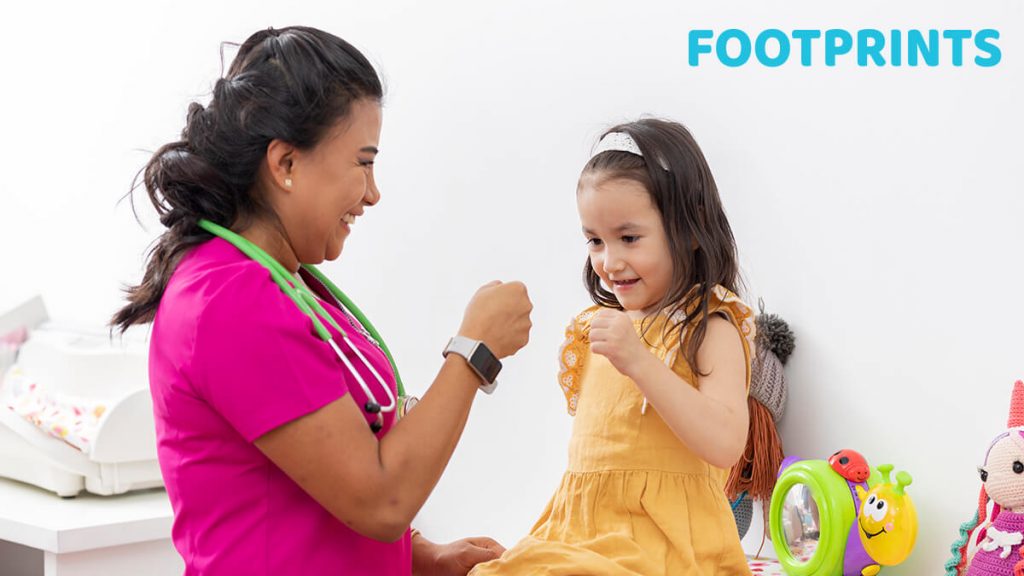

Think of monsoons, and you tend to think of rain showers, of petrichor, playing in puddles of water, delicious food, rain songs, and more. Yet, monsoons are also associated with a wide range of diseases that also affect toddlers. Awareness of these common types of monsoon illness, their symptoms, and preventive measures can go a long way when it comes to safeguarding the health of our little ones.
Here is a guide that will come in handy for parents as well as for caregivers who run a daycare.
1. Dengue
Speak of this disease, and it tends to send shudders down our spine, especially since we associate it with falling platelet counts. Dengue is a mosquito-borne disease that is capable of causing severe illness. Its symptoms include high fever, pain in joints, rashes, and in severe cases, bleeding.
Preventive measures include not allowing stagnant water so as to prevent mosquitoes from breeding. Using mosquito repellents & wearing clothes that cover the body are also handy measures.
However, should the child contract the disease, do not panic. The key is to monitor the child’s platelet count. Remember to follow the doctor’s advice to ensure speedy recovery. Fluids and rest are recommended in dengue recovery. The complications associated with Dengue Fever usually appear between the third and fifth day of illness. Therefore, it is important to watch for any symptoms even after the fever abates. The good news is that in children, dengue is generally mild.
2. Malaria
Another rainy season or monsoon disease that is mosquito-borne is Malaria. The symptoms of Malaria include high fever, chills, and body aches. Prevention once again revolves around preventing mosquito bites. Use of repellents, bed nets, and more is advisable. It is also important to wear clothes that fully cover the body.
3. Chikungunya
A viral disease transmitted by mosquitoes, its symptoms include high fever, severe pain in the joints, rash, and overall fatigue. All mosquito control measures need to be undertaken to be able to fight against the spread of this disease.
4. Typhoid Fever
Caused by the bacteria Salmonella Typhi, this disease spreads through contaminated food and water. It is characterized by fever, loss of appetite, exhaustion, and more. Timely vaccination is the first line of defense against the disease. Additionally, be careful about offering the child safe water and well-cooked food.
5. Viral Fever
Monsoons are also the time for several viral fevers. There could be different strains of the virus causing these fevers. Most viral fevers are characterized by fever, body aches, sore throat, and fatigue.
It is imperative that the child’s immunity be built so that he or she can fight the disease. Gargling with warm, salty water can help relieve the sore throat.
6. Respiratory infections
Monsoon is also the time for a lot of respiratory infections. Cough, runny nose, sore throat, fever, and difficulty in breathing are common symptoms. In times such as these, the biggest precaution to take is for everyone to practice respiratory hygiene. Covering the mouth and nose while coughing or sneezing can help prevent the spread of these infections.
7. Gastroenteritis
Monsoon also brings with it a host of stomach-related diseases. With viruses and bacteria present in water, food, and even on surfaces, it only takes a little carelessness to contract gastroenteritis. Children tend to contract it, especially as they keep touching surfaces. The disease is marked by vomiting, diarrhoea, and abdominal pain that leaves the child dehydrated and weak. To ensure the child follows hand hygiene. Besides, give them boiled water as far as possible. Be careful also to see that the child does not consume any food kept in the open.
8. Conjunctivitis
If you have noticed a number of people wearing dark glasses, odds are that they are suffering from conjunctivitis or what is popularly known as pink eye. It is marked by redness, itching, and discharge. It is important that the child does not come in contact with others who have contracted this. Also, good eye & hand hygiene should be followed.
9. Cholera
This is a disease caused by bacteria that thrive in contaminated water & food. In terms of symptoms, cholera is known for its debilitating diarrhoea bouts along with vomiting and, needless to say, a lot of exhaustion and weakness. It is imperative that proper hygiene be followed and that you protect the child from outside food and water as much as possible. As far as possible, ensure that the child consumes boiled water. Food should be well-cooked and is best avoided raw. It is also imperative that the child be vaccinated against the disease.
10. Fungal infections
The rainy season is also the time for a lot of fungal infections, among them ringworm and athlete’s foot. The infection can be itchy, causing a lot of discomfort.
Ensure that you maintain good personal hygiene for the child. Also, ensure you keep their skin dry.
11. Hepatitis A
Once again, a water-borne disease, it is known to attack the liver. The Hepatitis A virus thrives on unclean water and food. The disease is spread through flies that could sit on the stool of an infected person and then on exposed food. Symptoms of the disease include stomach ache, vomiting, diarrhoea, and jaundice. Vaccination and proper hygiene go a long way in helping prevent the spread of monsoon diseases.
To Sum Up
All of this is not to keep you from enjoying this otherwise beautiful season that brings much relief to the parched earth. All you need to do is follow some precautions to ensure that you can make the most of the season. To reiterate, the answer to how we can prevent common monsoon diseases lies in basic precautions, namely:
- Ensure you do not allow stagnant water to accumulate
- Make the child wear clothes that cover the body
- Use mosquito repellents
- Ensure you practice good hygiene
- Ensure that the child has well-cooked food
- Give the child boiled water, as far as possible
- Make sure they do not come in contact with infected individuals as far as possible
- Do follow the child’s vaccination schedule religiously

With these basic precautions, you will be in a position to enjoy this beautiful season. Do remember, however, that sometimes, despite your best efforts, the child could contract any of these monsoon diseases. Do not beat yourself up. Instead, take medical advice and follow it carefully. While it is devastating for a parent to see the child suffer, the right medical treatment can see your child healthy and smiling again.

Amita is an experienced educator with over 30 years of experience. She has an outstanding understanding of child development, having worked with various age groups for prestigious businesses. She has been dedicated to handling Footprints’s Curriculum and Delivery department for the past decade. Amita’s credentials include being one of India’s few HighScope Curriculum certified trainers and volunteering as a course leader for Landmark Education, the world’s largest training firm.

